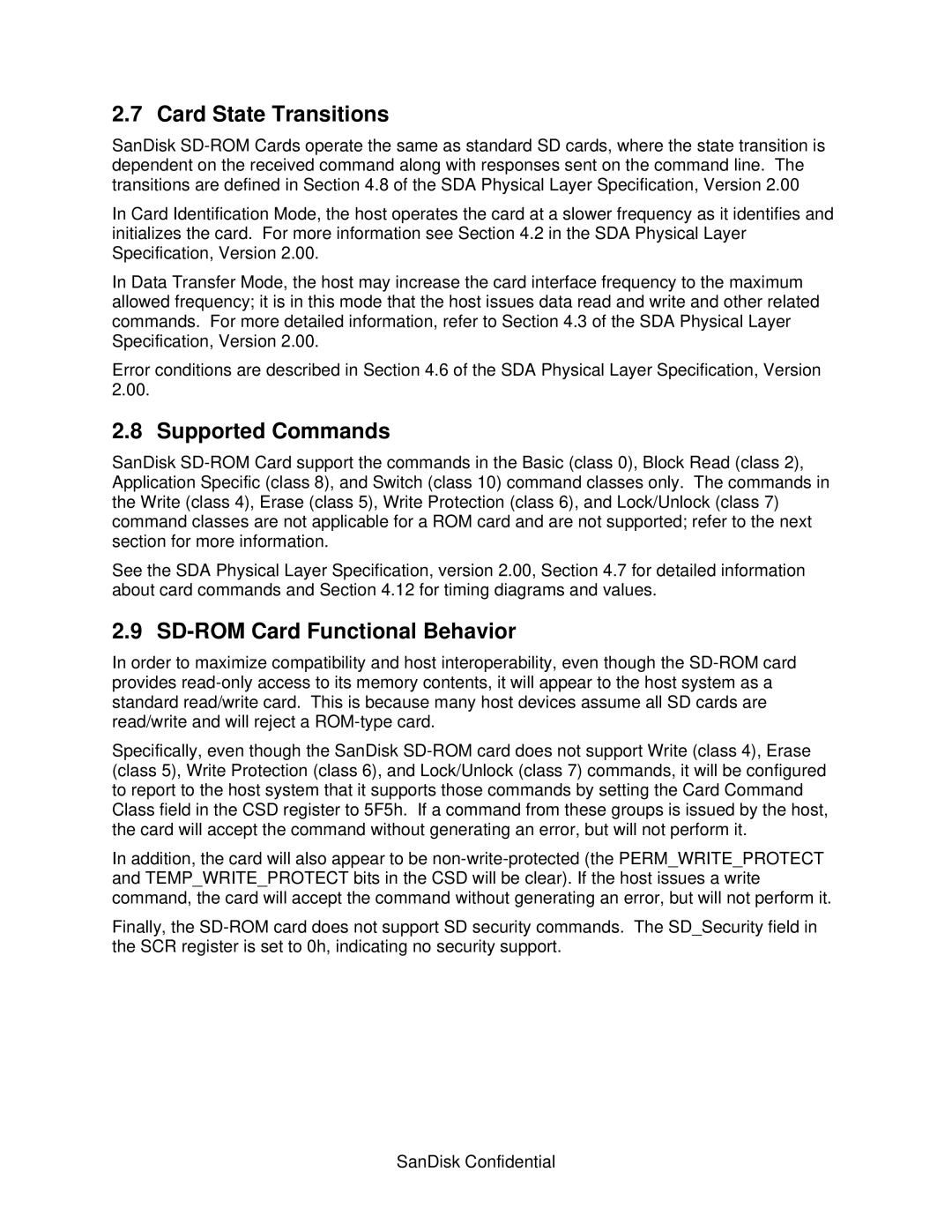2.7 Card State Transitions
SanDisk SD-ROM Cards operate the same as standard SD cards, where the state transition is dependent on the received command along with responses sent on the command line. The transitions are defined in Section 4.8 of the SDA Physical Layer Specification, Version 2.00
In Card Identification Mode, the host operates the card at a slower frequency as it identifies and initializes the card. For more information see Section 4.2 in the SDA Physical Layer Specification, Version 2.00.
In Data Transfer Mode, the host may increase the card interface frequency to the maximum allowed frequency; it is in this mode that the host issues data read and write and other related commands. For more detailed information, refer to Section 4.3 of the SDA Physical Layer Specification, Version 2.00.
Error conditions are described in Section 4.6 of the SDA Physical Layer Specification, Version 2.00.
2.8 Supported Commands
SanDisk SD-ROM Card support the commands in the Basic (class 0), Block Read (class 2), Application Specific (class 8), and Switch (class 10) command classes only. The commands in the Write (class 4), Erase (class 5), Write Protection (class 6), and Lock/Unlock (class 7) command classes are not applicable for a ROM card and are not supported; refer to the next section for more information.
See the SDA Physical Layer Specification, version 2.00, Section 4.7 for detailed information about card commands and Section 4.12 for timing diagrams and values.
2.9 SD-ROM Card Functional Behavior
In order to maximize compatibility and host interoperability, even though the SD-ROM card provides read-only access to its memory contents, it will appear to the host system as a standard read/write card. This is because many host devices assume all SD cards are read/write and will reject a ROM-type card.
Specifically, even though the SanDisk SD-ROM card does not support Write (class 4), Erase (class 5), Write Protection (class 6), and Lock/Unlock (class 7) commands, it will be configured to report to the host system that it supports those commands by setting the Card Command Class field in the CSD register to 5F5h. If a command from these groups is issued by the host, the card will accept the command without generating an error, but will not perform it.
In addition, the card will also appear to be non-write-protected (the PERM_WRITE_PROTECT and TEMP_WRITE_PROTECT bits in the CSD will be clear). If the host issues a write command, the card will accept the command without generating an error, but will not perform it.
Finally, the SD-ROM card does not support SD security commands. The SD_Security field in the SCR register is set to 0h, indicating no security support.
